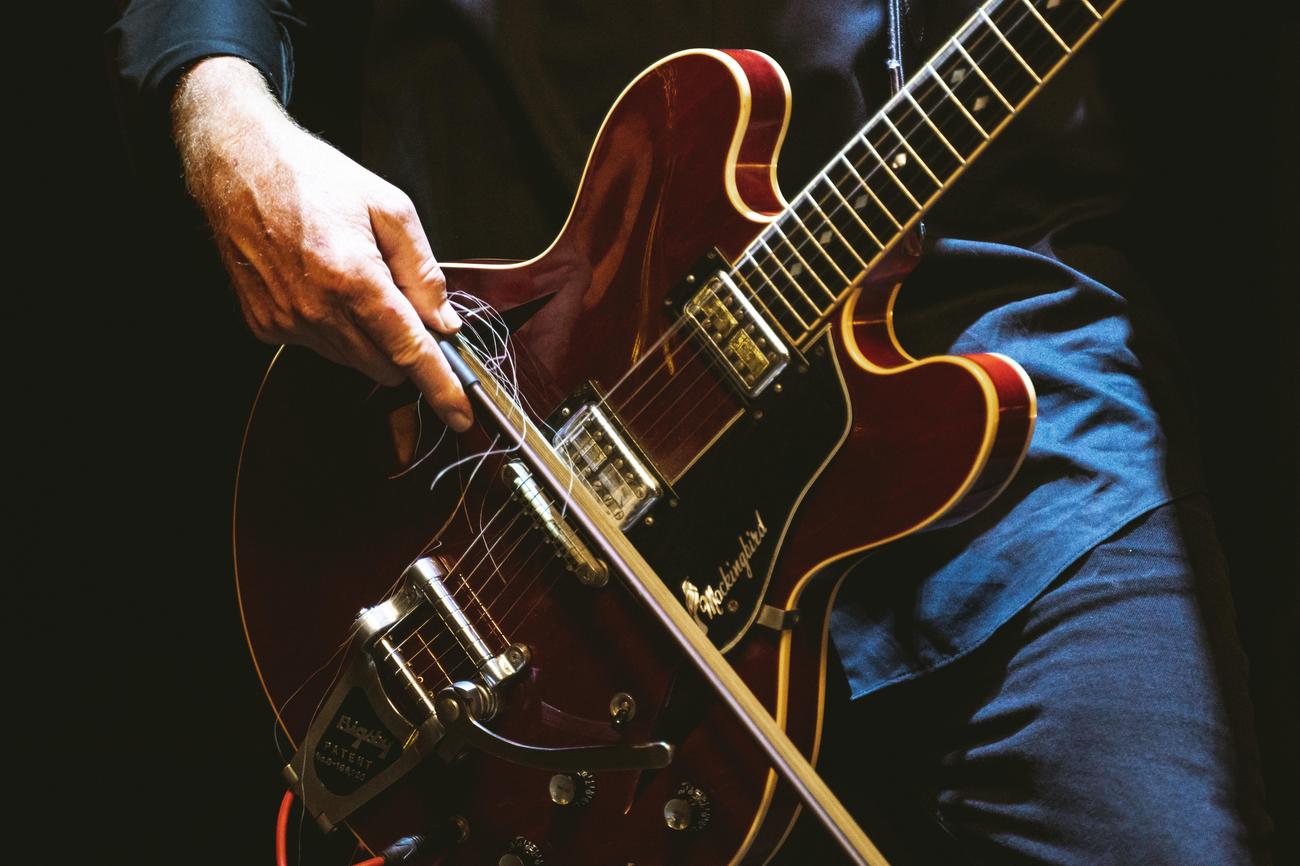Welcome to the enchanting world of electric guitars! In this article, I will take you on a journey through fascinating facts and insights about this iconic instrument. As a seasoned music journalist with a deep understanding of its history, construction, and influence on modern music, I am thrilled to share my expertise with you. Get ready to delve into captivating details, interesting anecdotes, and the technicalities that make the electric guitar such a powerful presence in the world of music. So, whether you’re a dedicated guitarist or simply curious about this instrument’s allure, get ready to be thoroughly enthralled by the electric guitar facts that await you!

Electric Guitar Facts
The world of music has been forever transformed by the enchanting presence of electric guitars. From their humble beginnings to their prominent role in various genres, electric guitars have captivated musicians and listeners alike. In this article, we will delve into fascinating facts and insights about these iconic instruments. So, let’s embark on a journey through time and explore the realm of electric guitar facts.
Evolution of the Electric Guitar
The electric guitar, as we know it today, has a rich historical background. It all started in 1931 when the first electrically amplified guitar was discovered. This breakthrough led to the creation of the first complete electric guitar in 1940 by visionary inventors. “The electric guitar revolution had begun!”
Unleashing the Power of Electricity
Unlike its acoustic counterpart, the electric guitar produces sound with the help of electrical signals and an amplifier. This electrifying combination allows for greater control and amplification of the guitar’s tones. With the ability to alter the pitch and produce various effects, the electric guitar serves as both a lead and rhythm instrument. “The power of electricity brings endless possibilities to the fingers of guitarists.”
Iconic Presence in Music Genres
Rock, pop, blues, jazz, metal, punk, reggae, R&B, and many more genres owe their distinctive sounds to the electric guitar. Its versatility and adaptability have made it a primary instrument in countless musical compositions. Whether it’s the soulful melodies of blues or the high-energy riffs of rock, the electric guitar leaves an indelible mark on the history of modern music. “The electric guitar has become the heartbeat of numerous music genres, painting sonic landscapes that resonate with the soul.”
The Legendary Six-String Guitar
When we think of an electric guitar, it’s often the classic six-string guitar that comes to mind. This popular configuration has become synonymous with the instrument, providing a foundation for countless melodies and solos. With its six strings and a combination of frets, the six-string guitar opens a world of musical possibilities. “The six-string guitar, an epitome of musical expression and creativity.”
Unleashing Sonic Wonders
With advancements in technology, electric guitars can produce an array of effects that add depth and texture to the music. From shimmering and swirling sounds to mind-bending distortions, these effects are integral to shaping the character of electric guitar music. “Electric guitars have the power to transport listeners on a sonic journey, creating ethereal landscapes along the way.”
Innovations that Sparked a Revolution
The advent of electric guitars can be traced back to the demand for amplified instruments during the big band era. Instrument manufacturers and acoustic guitar makers joined forces to design electric guitars that would meet this growing need. In 1931, the world witnessed the first commercially marketed electric guitar, known as the “Frying Pan,” designed by George Beauchamp and Paul Barth. This groundbreaking innovation introduced electromagnetic pickups that converted string vibrations into electrical signals, paving the way for guitar amplification. “Through determination and ingenuity, pioneers forged a new chapter in music history, forever changing the trajectory of sound.”
Electric guitars have mesmerized generations of musicians and listeners with their captivating melodies and distinctive presence. From their early beginnings to their enduring impact on music, these fascinating instruments continue to shape the world of sound. So, take a moment to appreciate the marvelous world of electric guitar facts, where craftsmanship meets innovation, and creativity knows no bounds. “Let the ethereal sounds of electric guitars transport you on a musical odyssey like no other.”
Electric guitars have revolutionized the world of music, and we can’t help but be fascinated by their incredible history and technical prowess. If you’re a guitar enthusiast, then you definitely need to check out our exclusive list of 10 Facts About Electric Guitars. From mind-blowing innovations to iconic musicians who have mastered the instrument, this collection will surely leave you inspired. So why wait? Click here to uncover the fascinating stories and secrets behind these legendary instruments: 10 Facts About Electric Guitars. Immerse yourself in the world of electric guitars and let the music take you to new heights.
FAQ
Q: When was the first electrically amplified guitar discovered?
A: The first electrically amplified guitar was discovered in 1931.
Q: When was the first complete electric guitar made?
A: The first complete electric guitar was made in 1940.
Q: How does an electric guitar produce sound?
A: An electric guitar produces sound with the help of electrical signals and an amplifier.
Q: What genres of music commonly use electric guitars?
A: Electric guitars are used as primary instruments in many music genres, including rock, pop, blues, jazz, metal, punk, reggae, R & B, and more.
Q: What effects can an electric guitar produce?
A: An electric guitar can produce various effects by shifting the pitch of the guitar’s signal, including common effects such as shimmering or swirling noises.
- SYBAU See You Baby Meaning: Gen Z Slang Evolves - July 1, 2025
- Unlock Your Inner Youth: Lifestyle Secrets for a Vibrant Life - July 1, 2025
- Decode SYBAU Meaning: Gen Z Slang Explained - July 1, 2025






